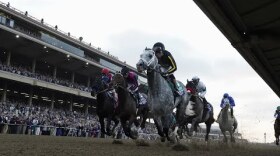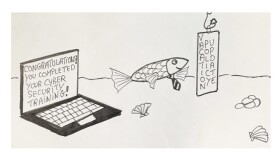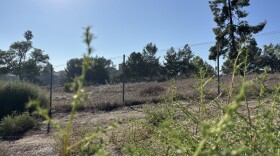The Great Depression of the 1930s was an economic disaster of tremendous proportions. This year marks the 75th anniversary of the New Deal, President Franklin Roosevelt's plan to put people back to work and put food on their tables. New Deal programs were in every state and most cities, including San Diego.
Narration, Pat Finn : In the 1930s San Diego, like the rest of the country, was in trouble. The Great Depression, which had begun in 1929, gathered strength and deepened. By 1933, nearly 25% of the American workforce was unemployed. In San Diego County, statistics were just as grim: at least 16,000 were unemployed and 4,000 families were on direct relief. The liquidation sales and soup kitchens contributed to the general fear and unrest.
Iris Engstrand : Unemployment affected mostly the farm workers and people in manufacturing industries such as the tuna canneries; the restaurant business, and people who were considered expendable were recent immigrants or Mexicans whose families had been born here were, we would say today perhaps, deported, they liked to use the word repatriated to Mexico. Some of the people who had jobs and some of the families who lived in Mission Hills were really not aware that there was a depression going on, but in the Imperial Valley the Mexican workers were very unhappy. Even vigilante committees were formed to chase people out. So there was a lot of unrest, and so it was a time when we needed some help from other areas.
Narration, Pat Finn : When Franklin Roosevelt was elected president in 1932, the most urgent task was to get people back to work and money flowing into the economy again, sort of trickle up economics, if you will. The administration created one government-financed program after another:
The NRA, AAA, PWA, TVA, CCC, to name a few. In this forest of New Deal initials, one program stands out as unique: the WPA, or Works Progress Administration. The WPA's goal was cultural: to put people to work creating projects for the social and educational benefit of the community.
Seth Mallios : For me, the works progress administration is a distinctive time period where the government takes it upon themselves to resuscitate the nation. Instead of saying to the people you have to take care of yourselves, they say we're going to help you take care of yourselves. They're investing in the people. It was the depression that ended up freeing up the WPA money that created most of the buildings that started the historic core of San Diego State.
The first WPA grant that they get is for Aztec Bowl. It's for the football stadium. First of all it is the first football stadium to be on a college campus in California, here in San Diego. Secondly, this is grueling work. They employ 700 people in the 30s and these individuals, these men are responsible for breaking the big rocks into the little rocks and digging out the entire Aztec Bowl.
Another WPA grant is solicited and funded for this quad area. And to make it a quad area, they bound it with these classrooms on the side, they terraced the area all around us, and they build 50 wooden park benches, and a lot of these benches have WPA impressed into the sides of them.
So what's known today as the Open Air Theater was originally known as the Greek Bowl. They dug this enormous hole to create this amphitheater, and it too served as the center of campus.
Iris Engstrand : Under the WPA we were able to fund the construction of San Diego State University in Mission Valley where it is today. The Del Mar fairgrounds did come under the WPA -- the road up to Palomar Observatory -- and so we were able to profit in San Diego from a number of these projects that were long-lasting, and probably the most long-lasting that we see every day is the County Administration building.
Narration, Pat Finn : The County Administration building was one of several designed by local architect Richard Requa and built with WPA funds. Two others in Balboa Park are the Ford building, now the San Diego Aerospace Museum, and the federal arts building, now the San Diego Hall of Champions.
Today, we're reasonably accustomed to the government granting funds to build roads, amphitheaters and buildings. But starting in 1935, the WPA did something that - nearly 75 years later -- we rarely see. It gave checks to artists, writers, musicians, playwrights, actors and historians. The WPA put artists to work.
Seth Mallios : Art work was seen as legitimate work in the 30s., the Federal Art Project -- the FAP -- was part of the WPA. And just as they're paying people to shovel and pickaxe, they're paying people to do art work. They're equated as one and the same.
Bram Dijkstra : At this point in time, American artists had become like workers because there was no money around for the artists to sell their work, and that's why the WPA became very important, to help them develop their work.
Narration, Pat Finn : Public art flourished in San Diego in the 1930s as the WPA commissioned murals from George Sorenson, Charles Reiffel, and, most famously, from Belle Baranceanu, whose work began appearing all over town.
Bram Dijkstra : She did the San Diego mural in 1934 and then in 1935 she did the "Progress of Man" mural and after that she did the La Jolla post office mural, which is still in existence. And then in 1937, she did the Roosevelt High murals, which are now hanging here in the Historical Society. And her last major commission for the WPA was the "Seven Arts" mural for La Jolla High School. Belle Baranceanu essentially spent the 30s here in San Diego doing murals.
Narration, Pat Finn : Belle Baranceanu's La Jolla High murals were destroyed in the 1970s. At SDSU, George Sorenson's WPA murals were simply built over.
Seth Mallios : The reaction to this during the 40s and the 50s is that it wasn't as artistic and that's what leads a lot of decision makers to say I'm not as impressed with this artwork, let's build it over, let's rennovate, let's destroy it. Because art criticism is so fickle and what's hot one day is cold and then comes back into vogue, we now have next year being the 75th anniversary of the new deal and this stuff is hot again.
Narration, Pat Finn : The Great Depression was the worst economic disaster in American history. Roosevelt's New Deal produced mixed results over its eight years, and in the end, the Great Depression lifted for good when the nation began to gear up for World War II. Today, the high taxes that supported this extensive public works program are as out of fashion as WPA art was in the 1950s.
In San Diego the legacy of the New Deal and the WPA lingers in the elegant lines of the County Administration building, the museums in the western end of Balboa Park, and the powerful murals of Belle Baranceanu. But it is perhaps most evident in our region's largest university.
Seth Mallios : It was built by the WPA. It was built by the blood sweat and tears of the common worker. And whenever they renovate a building, whenever they work on the landscape, they find some sort of physical, tangible reflection of the common people. Those murals in Hardy Tower -- once you peel back the acoustic ceiling tile you get to see the art work of early San Diegans. And that's why I believe that we can actually see the soul of this university -- what's at the core of the university -- the people of San Diego.




